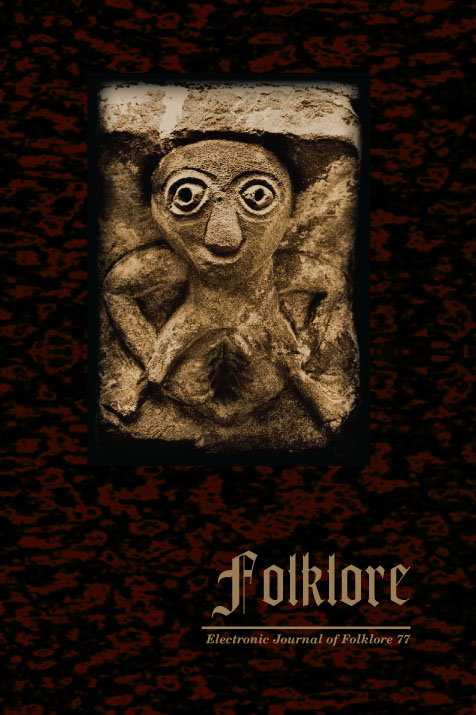What Can the Mythical Frog Tell Us? The Symbolism and Role of the Frog in History and Modernity
What Can the Mythical Frog Tell Us? The Symbolism and Role of the Frog in History and Modernity
Author(s): Jelka Vince PalluaSubject(s): Customs / Folklore, Cultural Anthropology / Ethnology, Culture and social structure
Published by: Eesti Kirjandusmuuseum
Keywords: female genitals; fertility; frog; frog-goddess; frog-woman; frog-womb votives; regeneration; toad; Virgin Mary;
Summary/Abstract: Frogs have always been related to the mythical origin of life. In mythologies throughout the world, frogs were associated with the primeval waters out of which life arose. The author looks at the rich symbolic language of this amphibian, with a special focus on its clear female symbolism – fertility, fecundity, female genitals, abundance, regeneration, renewal of life, pregnancy, eroticism, wetness/life, etc., as well as divine symbolism as revealed in the Polish and Croatian words for frog – boginka and bogińa (goddess). The author identifies and discusses past and contemporary imagery, legends, narratives, and fairy-tales, and the folkloristic, mythical, ethnological, archaeological, and linguistic aspects of frogs and their symbolism. The folkloristic triplet toads – babas – mushrooms identified during the research is presented as additional proof of the analogous linguistic triplet with bau or bo roots in some European languages. All three of the items, with the aspect of wetness as a precondition for fertility, as shown in the paper, are symbols of female sexual organs, fertility, and renewal. In the end, the author points to the longevity of the image of the frog presented next to the Virgin Mary in an interesting syncretism of the pre-Christian and Christian worlds.
Journal: Folklore: Electronic Journal of Folklore
- Issue Year: 2019
- Issue No: 77
- Page Range: 63-90
- Page Count: 28
- Language: English

